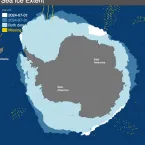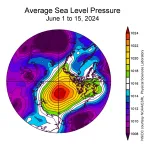Our Research
As climate changes, how do Earth's frozen areas affect our planet and impact society?
In this section
Related News & Stories
Filter by:

Feature Story
From 2007 to 2022, renowned photographer James Balog documented glacial change around the world through a project called the Extreme Ice Survey. One and a half million images showcasing climate change in real time are now stored and managed at the National Snow and Ice Data Center.

Analysis - Sea Ice Today
Arctic sea ice cover retreated rapidly in July 2024, pushing the daily ice extent at the end of the month to the third lowest in the 46-year satellite record.

Spotlight
An exciting new addition has arrived to the NSIDC.org website, allowing users to better explore community-based observations of the Arctic.

Analysis - Sea Ice Today
July is the warmest month in the Arctic and hence also the month of peak sea ice loss. As of the middle of July 2024, extent is declining at an above average pace.

Analysis - Sea Ice Today
The Arctic sea ice cover in June 2024 retreated at a below average pace, leading to a larger total sea ice extent for the month than in recent years. Many areas of open water have developed along the Arctic Ocean coast.

Analysis - Ice Sheets Today
On April 25, 2024, a moderately strong melt event kicked things off early on the Greenland Ice Sheet. Since then, however, the melt season has been fairly typical. Snowfall in early June blanketed exposed ice, which will slow the onset of more intense melting and run off for the next few weeks. Overall, melting in Greenland has remained well above the 1980s and 1990s levels since 2013, but the 2012 season remains a distinct record.